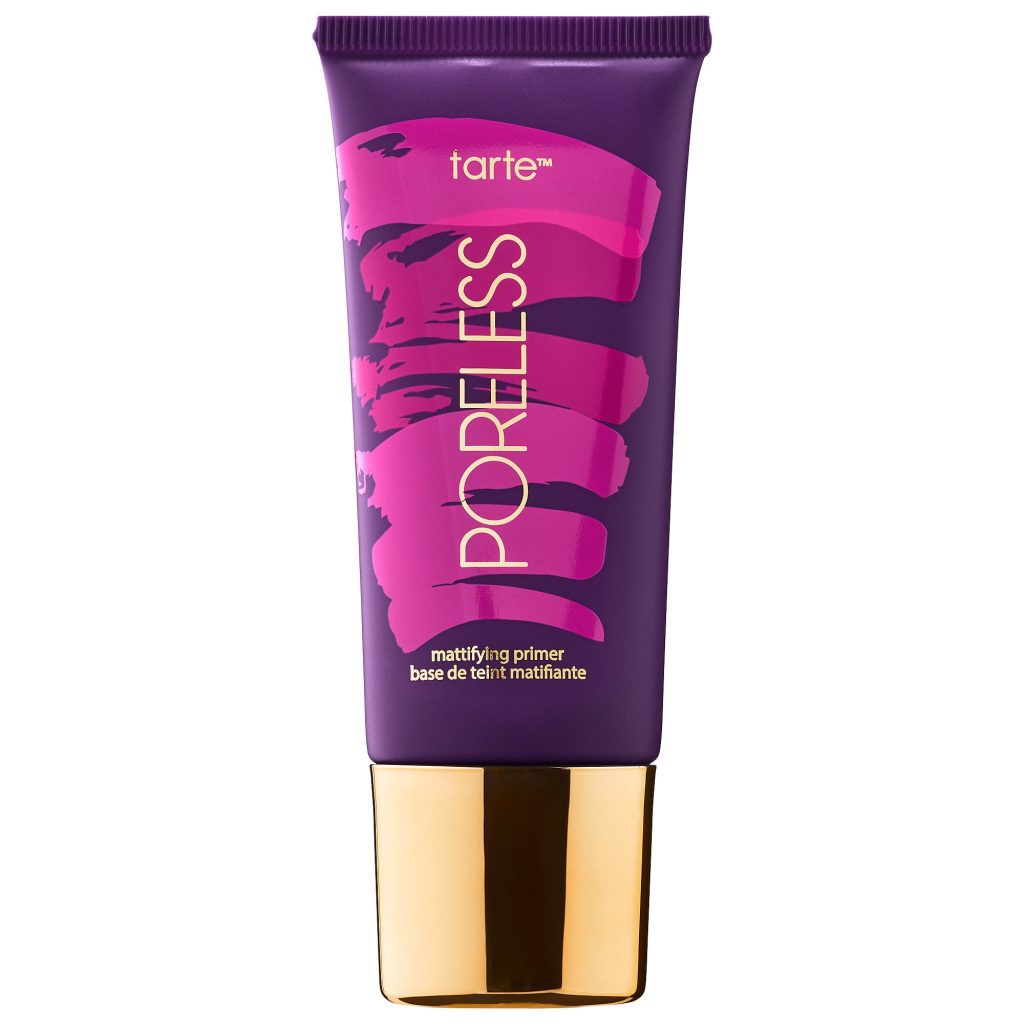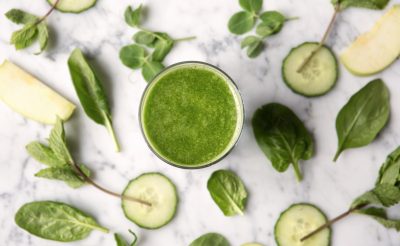Primers have become a staple in most makeup bags over the last few years, but what are they really for and who needs to be using them?
Whether you wear a full face of makeup or you prefer to keep it simple with a BB cream, the basic idea behind primers is to combat shine and to help create a smooth base for foundation. While some think they are a pointless extra step in your routine, others rely on their ability to boost your glow, minimise pores and blur imperfections.
The key to primers in 2018 is deciding how it can benefit your skin, and then finding the right formula for it. With so many options available (think illuminating, hydrating, pore-reducing and more), we break down the options based on your skin type.
Illuminating primers
If there’s one thing that we all want, it’s a dewy, radiant complexion and primers spiked with pearlescent ingredients can help give you just that by blurring imperfections and creating the illusion of radiance. Our favourite is the Benefit Cosmetics The Porefessional Pearl Primer, which has the same silky-smooth texture as the original with an added hint of soft pearly pink. Skin is left smoother-than-smooth with a matte finish and glowing radiance for a fresh face that lasts all day, whether you wear makeup or not.

Benefit Cosmetics The Porefessional Pearl Primer, sephora.ae
Colour-correcting primers
Colour-correcting primers are particularly confusing because, let’s face it, no one in their right mind would willingly slather shades of green, pink and even purple across their face. However, if you’re looking to tone down redness or even out your skin tone, you can’t beat them. The fundamentals of colour correcting lie in neutralising certain shades with opposing colours from the colour wheel. For example, purple neutralises yellow, green neutralises red, and orange neutralises blue. So green primers are best for skin tones prone to rosacea and acne while a lavender primer is used to tone down yellow skin.

Givenchy Beauty Prisme Primer SPF20 in Vert No. 5, net-a-porter.com
Mattifying primers
If you suffer from oily skin or you’re looking for a primer to help combat sweat (particularly important when you live in a hot climate like Dubai), you should reach for a mattifying or oil free version. We recommend the Estée Lauder The Mattifier Shine Control Perfecting Primer + Finisher, which delivers a smoothing and mattifying veil onto the skin to control oil and reduce shine. It can be used in the morning before makeup application or for touch-ups throughout the day to keep your complexion looking flawlessly velvet.

Estée Lauder The Mattifier Shine Control Perfecting Primer + Finisher, lookfantastic.com
Pore-reducing primers
If you suffer from enlarged pores, a pore-filling primer that helps create a smooth base for makeup could be exactly what you need. Unlike colour-correcting primers and illuminating primers that may need to be topped off with foundation to blend and tone down the effects, pore-reducing primers can be swept on before running out the door for a blurred complexion. Just be sure to pick a formula with a matte finish because adding shine will only magnify your pores. The Tarte Poreless Mattifying Primer is a great option as it helps to erase pores and resurface uneven skin texture from fine lines, dry patches, or acne scars.

Tarte Poreless Mattifying Primer, glamazle.com
Soft-focus primers
If you want to look like your favourite Instagram-style filter, it’s time to invest in a soft-focus primer. These formulas are designed to deliver a high definition finish with a ridiculous glow all while blurring imperfections and working to keep your makeup in place. The Becca Backlight Priming Filter is infused with three unique Filtering Luminescent Pearls and each one adds a different drop of diffused light. Blended together, they impart a one-of-a-kind, soft-focused radiance that acts as an instant filter, while the vitamin E-enriched formula minimises the appearance of fine lines and wrinkles.

Becca Backlight Priming Filter, cultbeauty.co.uk
Application
Once you’ve decided on the right formula, the application process is just as important. Using too much primer can backfire, causing your foundation to clump, or skin to appear chalky or overly shiny.
Step 1: First thing in the morning and before applying your makeup you should always wash your face to ensure all traces of dirt and impurities have been removed (you would be surprised at how many germs can lurk on your pillowcase and in your bed sheets).
Step 2: While many primers boast hydration benefits, they’re not meant to replace your daily moisturiser so now’s the time to apply one based on your skincare needs.

Beautyblender The Original Beautyblender, sephora.ae
Step 3: Using a pea-sized amount of primer, start in the middle of the face and blend out with your fingers or a slightly damp sponge (we like the Beautyblender). Remember, a little bit goes a long way and it’s easier to add than remove.
Step 4: Finish by applying the rest of your makeup as desired.



